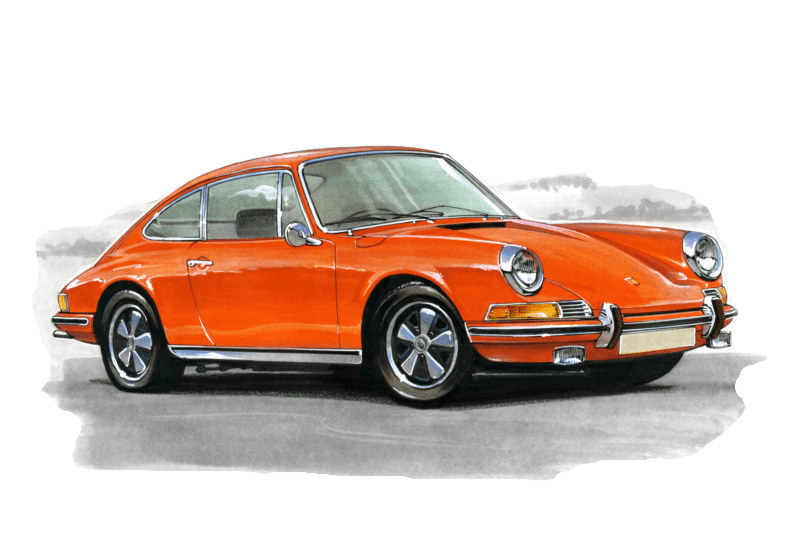
The Porsche 911 is unquestionably one of the most iconic sports cars in history, with a lineage that traces back to 1963. The original design was presented at the Frankfurt Motor Show under the model name Porsche 901. However, due to a trademark dispute with Peugeot, Porsche was required to change the name, thus giving birth to the 911 moniker.
The 911 was conceived as a more powerful and larger replacement for the Porsche 356, the company’s first model. The 911 featured a rear-mounted, air-cooled 2.0-litre flat-six engine producing 130 horsepower.
This first-generation 911, often referred to as the “classic” 911, carried on until 1973, throughout which several changes were made, including gradual increases in engine size and power, the addition of fuel injection, and design tweaks. Notably, it also saw the introduction of the Targa body style – a semi-convertible setup with a removable roof section and a roll-bar.
In 1973, Porsche introduced the Carrera RS, a higher-performance model of the 911, which remains a coveted collector’s car today.
After a decade of success, the visual design of the 911 was given a significant refresh in 1974, mainly driven by changes in safety regulation. Now dubbed the “G-series,” this generation lasted until 1989 and introduced the first production turbocharged 911s, often referred to as the “930.”
The “964” arrived in 1989 as a leap forward in technology, with a new platform featuring coil-spring suspension rather than torsion bars, power steering and anti-lock brakes for the first time.
By 1993, the next incarnation, the “993” was in the market. This was the last of the air-cooled 911s, making it a favorite among purists and collectors today.
The “996” arrived in 1998, marking a controversial shift to a liquid-cooled engine. Despite being technically better in every way, the 996 was initially disliked by many fans due to its new water-cooled engine and its “fried egg” headlight design.
The “997” generation, introduced in 2004, addressed many of these concerns, offering a return to traditional styling cues alongside modern developments. Afterward, Porsche continued its trend of gradual evolution with the “991” generation in 2011, and its current “992” generation which was launched in 2019.
Throughout its life, the Porsche 911 has been praised for its distinct design, its performance, and its usability as a daily driver — unheard of for most sports cars. Thanks to its successful synthetization of tradition and innovation, the 911 became a franchise, a standard-bearer of a brand, and a symbol of the sports car par excellence.
Top questions about Porsche 911 (FAQ):
- When was the first Porsche 911 introduced?
- Who is the designer of the Porsche 911?
- How many generations of the Porsche 911 have been released?
- What is the engine displacement of the base model Porsche 911?
- What are the different body styles available for the Porsche 911?
- How long does it take for the Porsche 911 to accelerate from 0 to 60 mph?
- What is the top speed of the fastest Porsche 911 variant?
- What is the starting price of the Porsche 911?
- How many horsepower does the base model Porsche 911 have?
- What type of transmission options are available for the Porsche 911?
- Is the Porsche 911 rear-wheel drive or all-wheel drive?
- How many seats does the Porsche 911 offer?
- What is the fuel efficiency of the Porsche 911?
- Are there any hybrid or electric variants of the Porsche 911?
- What are some of the unique design features of the Porsche 911?
- How many airbags are included in the Porsche 911?
- Does the Porsche 911 offer advanced safety features like lane keeping assist and adaptive cruise control?
- How many color options are available for the Porsche 911?
- What is the cargo capacity of the Porsche 911?
- What are some of the main competitors of the Porsche 911 in the luxury sports car segment?
- Another questions